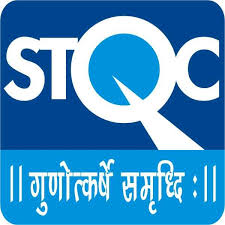Your Excellency, Ambassador Zhang Yan,
Ladies and Gentlemen.
Thank you for inviting me to view the exhibition on the India-China Year ofExchanges in 2011, and to share thoughts on developments in India-Chinarelations.
Today India-China relations attract attention beyond our two countries.International developments and achievements in domestic construction by ourpeoples in the last few decades have given our relationship wider significance.Relations between India and China and their new equilibrium hold an importantkey to the emerging economic and strategic landscape of Asia and, to a certainextent, the world.
Let us look briefly at the context within which we conduct our relations andthen look at the content of our relations today.
The Context
The basic facts are evident and well known. India and China are thetwo most populous nations on earth, are the two largest developing countries,and are among the societies and economies in the world that are transformingthemselves most rapidly. They are the largest and the third biggest economiesin Asia. China has the distinction of being the second largest economy in theworld. The two countries are building a strong domestic economic base andrapidly training scientific and technical manpower. When much of the world isreeling under recession or grappling with political turmoil, our two countrieshave managed to register reasonably healthy rates of growth and maintainstability. We share a common geopolitical space and similar socio-economicaspirations for ourselves.
The future is less certain or evident.Uncertainty in the international system is at unprecedented levels. Theeconomic and security situation facing both India and China has become far morecomplicated in the last few years. On the positive side, thanks to sustainedgrowth rates, high savings rates and a prudent financial approach, Asia and thedeveloping world have witnessed a greater accretion of relative economic powerfollowing the financial crisis of 2008. In Asia, larger economies like China,Japan, India, South Korea and Indonesia, all members of the G-20, haveincreased their ability to influence economic outcomes. The BRICS process hasalso gained ground. These are welcome developments.
At the same time, risks remain for economies which are still developing. Anearly return to robust growth and spending in the developed world are necessaryfor world economic recovery. The US, Europe and Japan still account forapproximately $20 trillion of consumption expenditure as against about $2.5trillion by China and India together. A re-balancing of economic structures inour countries in the face of such differences could be difficult. Moregenerally speaking, the relatively benign external environment in the last twodecades is changing negatively and is threatened by protectionism in thedeveloped world.
World politics also faces new challenges. The balance ofpower is in flux in Asia and the world. As uncertainty rises, powers followhedging strategies. The mechanisms of strategic communication and consultationand a common security outlook are evolving slower than the changes in objectivereality.
Besides, both India and China are increasingly linked to the rest of the world,through trade, investment and their Diasporas. The impact of changes in WestAsia on our energy security, for instance, is an example of how developmentsfurther away from our shores also affect India and China more and moreprofoundly. It is therefore natural for us to take ever greater interest onglobal issues.
Equally, global issues like climate change, nuclear proliferation and cyber andspace security matter more to both India and China in this globalised world asthey influence our development, peace and prosperity.
India-China relations
What does this context imply for India-China relations?
Both India and China currently give the highest priority to their domestictransformation, which will take time. A peaceful periphery, a stable and benignworld environment and continued prosperity among our economic partners are ofutmost importance to both of us. This will remain so for quite some time. It isin our mutual interest to work together, bilaterally and with other partners,to reduce uncertainty and create an international environment that issupportive to our domestic transformation efforts. Economics and developmentare not zero-sum games.
It is for this reason that we believe that there isenough space for both India and China to realise their developmentaspirations.
Economically, we are already integrated with each other to an unprecedentedextent. Our bilateral trade reached over US$67 billion in the first 11months of last year, and China has consistently remained our largest tradingpartner in goods for several years. However, investment flows between us havenot kept pace with trade. Indian investment in China worth a total of US$ 433million is spread over 676 projects, while Chinese investment in India is worthnearly US$ 300 million. There are several opportunities for cooperation indeveloping infrastructure. India is already one of China’s most importantmarkets for project exports, with a cumulative value of contracted projects atUS$ 53.5 billion and turnover realized at US$ 24.6 billion.
What is less noticed is the range of contact between our two societies. Forinstance, over 7,000 Indian students are studying in China today. This scale ofinteraction never occurred before in history.
Naturally, the corollaries of such an intensification ofeconomic and social engagement are issues of trade imbalance, diversifying thetrade basket and commercial disputes. The two governments have taken severalinitiatives to make our trade more balanced and harmonious, and to facilitateand streamline our business engagement. More remains to be done and we willlearn by doing. For instance in September last year we held the first StrategicEconomic Dialogue between India and China which identified several areas ofpromise for the future. Equally the business communities and their Chambersneed to take advantage of growing opportunities while sharpening competitiveedge. I am convinced that our business and economic engagement with each otherand with other countries will intensify as we seek to overcome the prospect ofsluggish recovery in the traditional engines of growth in the world economy.
Our Governments have common or similar positions on the globaldevelopment agenda, in WTO and on climate change, which has made it possiblefor us to work together internationally.
A few vocal experts in our two countries and elsewhere arguethat notwithstanding the numerous cooperative elements in our economicrelations and approach to international issues, India and China are bound to bestrategic adversaries. I find such determinism misplaced. It ignores thesuccessful experience and demonstrated expertise of both governments in managingdifferences and building on commonalities for over three decades andparticularly since the Rajiv Gandhi visit to China in 1988. It also ignores thewisdom of the leaders of the two countries, who have consistently worked toensure that problems are managed in a mature manner. The issue is whether wecan continue to manage the elements of competition within an agreed strategicframework which permits both of us to pursue our core interests. I see noreason why that should not be so. Indeed I would go further and say that therapid changes in the international situation today also create an opportunityfor India and China to work with others to shape benign international outcomes.
The boundary question remains unresolved, and there is no denyingthat it is a difficult issue. However, a number of mechanisms have been put inplace to ensure that the border stays peaceful while we seek a settlement ofthe boundary question. On the settlement itself, we are in the second stage ofthe three stage process of agreeing principles, a framework and finally aboundary line.
Similarly, on other bilateral issues of potential differencethere exist mechanisms of dialogue and communication toaddress them. We appreciate China’s assistance to us in tackling floods andnatural disasters in the downstream areas of our shared rivers. There is a needto widen the scope and deepen the level of our communication in some areas.These include new challenges and new issues in the changing context of ourrelations. I am confident that we will do so.
Indeed, some security challenges, especially of thenon-traditional variety, are common to India and China, and offer anopportunity to work together. Both India and China face the challenge ofterrorism in our shared neighbourhood. It requires common effort by all membersof the international community to tackle terrorism.
Energy is the key to domestic transformation in both India and China,which is why both of us have a common stake in energy security, and in thefreedom and security of transportation on the global commons. We both have aninterest in global public goods like a peaceful order, freedom of the seas andopen sea lanes. We similarly need to address issues of piracy with common resolve.As important maritime nations, we can contribute to each other’s maritimesecurity by coordinating approaches.
Asia’s security is interlinked across this greatcontinent. India has therefore argued for an open, inclusive Asian securityarchitecture. India and China will have key roles to play in forging a newcompact for common and collective security for Asia. We should also contributewithin our capacity to the global public goods that are increasingly importantto our well being.
The robustness of our bilateral relation will depend on dialogue andcommunication so that the potential for misunderstanding andmiscalculation is limited. This dialogue process must not be limited to the twoGovernments. Today, there are multiple stakeholders in our relations as alsomultiple determinants of these relations. Each of them, be it businessmen,media or scholars of the two countries, has a responsibility to take ourrelations to the desired level of equilibrium. It is therefore absolutelyessential that they acquire an informed understanding of their neighbour.Today, as both India and China change fast, our understanding of each other needsto keep pace. Both the quality and the scale of our interactions have alsogrown so rapidly that we need to learn new ways of dealing with therelationship.
Conclusion
To conclude, India and China have demonstrated an ability todeal with difficult issues and to build a cooperative partnership based oncommon interests. Its regional and global impact, and its long termsignificance to our own development, is what makes the India-China relationshipstrategic in the true sense of the term. I do hope that I have been successfulin giving you some idea of why I am confident that by working together Indiaand China will be able to successfully face the challenges that the newgeopolitics are throwing up, and would best serve their own national interestsby further deepening their strategic cooperative relationship.
Speech by NSA on “Developments in India-China Relations” at Chinese Embassyfunction
New Delhi
January 9, 2012





























